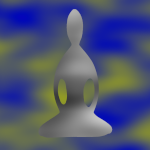Dear Friends,
This weekend, I sat a retreat led by Jeanne Corrigal. The topic was “Coming Home: to dharma, to love, to ourselves, and each other”. It was a beautiful retreat that brought together teachings from Buddhist and Indigenous traditions. One of my key takeaways was in reconnecting to the wisdom that comes from an embodied knowing – a knowing of a profound interconnection with all of life, with all of the elements.
Christina Feldman brings this in too. She writes
the teaching of deeply knowing that our very life is intrinsically interwoven with the lives of others. Each of our thoughts, words, and acts splinters into thousands of consequences that make an imprint upon the world around us, touching the lives of others. The thoughts, words, and acts of others deeply touch our own life. We cannot determine the skillfulness or unskillfulness of another person’s heart. We can take care of the ground that our own thoughts, words, and acts arise from, letting them be born of kindness, compassion, and joy and cultivating the inner balance that can live in the midst of unruly and difficult people without being broken.
page 122
One of the practices Jeanne brought into the weekend was to remind us of the “refrain” from the Satipatṭhāna Sutta, a set of instructions that is repeated through out the discourse. For example,
In this way, in regard to the body [one] abides contemplating the body internally, or one abides contemplating the body externally, or one abides contemplating the body both internally and externally. Or, one abides contemplating the nature of arising in the body, or one abides contemplating the nature of passing away in the body, or one abides contemplating the nature of both arising and passing away in the body. Or, mindfulness that “there is a body” is established in one to the extent necessary for bare knowledge and continuous mindfulness. And one abides independent, not clinging to anything in the world.
That is how in regard to the body one abides contemplating the body.
Satipatṭhāna: The Direct Path to Realization, by Anālayo, page 4
https://www.buddhismuskunde.uni-hamburg.de/pdf/5-personen/analayo/direct-path.pdf
This contemplation that “there is a body” helps us to cut out the extra story that can separate us from wisdom. When we contemplate the internal body – me – and the external body – you, and even more broadly the world – we see that we’re not separate, that we’re intimately connected, that what we do matters, but we can’t control the outcome.
With this embodied wisdom are these heart qualities of compassion and equanimity. Christina says,
We commit to doing all that is possible to ease the pain of a loved one. We can also feel the pain of our own powerlessness to fix everything, to make the difficult go away, to heal the pain of a loved one or change the mind lost in confusion. This is the ground in which equanimity and stillness are most needed and often most elusive.
pages 124-125
Where do we start? With the body.
Joseph Goldstein led a meditation that connects to the body, and then he gave a talk on Compassion and Equanimity on Worldwide Insight (now Sangha Live) in September 2017. You might enjoy the practice and his reflections:
https://sangha.live/dharma-library/compassion-and-equanimity-facing-challenges-in-difficult-times/
Warm wishes,
Andrea
